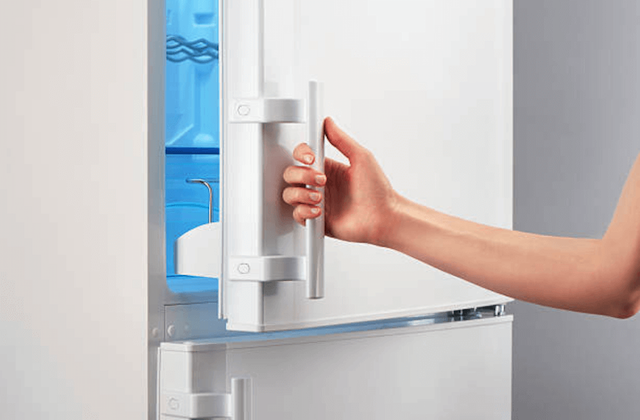Why is My Refrigerator Ice Maker Not Working?

United Appliance Repair is experienced in refrigerator repair in Union City, including professional services to fix broken ice makers. Learn about common ice maker problems below:
Ice makers are possibly one of the greatest inventions ever. An ice maker is a little luxury many people certainly not appreciate. Ice makers are simple machines that don’t feature a lot of complicated parts that could cause problems.
Like with any appliance repair, there are a few basic things that need to be looked at before assuming the worst. And, remember, if needed, you can replace your ice maker without replacing the entire fridge, dependent on the model. First, let’s discuss some of the causes for an ice maker breaking.
When an ice maker is making ice but it isn’t dispensing it it is usually means there’s a mechanical problem vs. an electrical failure. This can happen when shifting food around in the freezer, you might push or pull the control arm up or down. Often the ice maker might get jammed with something, possibly a chunk of ice. First, look to see if there is anything blocking this from working the right way.
Before beginning the process of clearing out the freezer, check that your ice maker is turned on. This can be done by moving the control arm down. Sometimes, moving food around in the freezer can put it in the off position. If the control arm is clear, then there might be food stuck inside the ice maker or it is not receiving a good connection.
Check the Control Arm
When the control arm is down and there’s ice but it’s not dispensing it, there might be a mechanical or electrical failure. This will require a bit more diagnosing. Ready to begin? First, we must check the electrical connection. This could become unplugged from the back of the freezer or refrigerator when shifting or moving the food in the freezer.
To inspect this, first unplug the freezer and pull it out away from the kitchen wall. Turn off the water supply valve. Locate the valve on the rear of the inside of the freezer. Basically this is what connects the ice maker into the freezer. Ensure that it’s plugged in properly.
After that, remove any ice that’s inside of the ice maker itself. This can be accomplished by adding a small amount of water to help to get ice that is in there out.
Once complete, turn on the power to the refrigerator and then turn on the ice maker. It might take the solenoid component a few seconds to react and fill the mold. When the mold is completely full, wait 4-5 hours or so to see if you’ve cleared the issue.
Check for Frozen Lines
More ice maker issues that might cause your ice maker to not make ice are frozen lines. The water lines have been blocked with frost. This is an easy problem to fix.
First, unplug the fridge and locate the water shut off valve. Shut the water off and then get a hair dryer to warm the water line or just let the fridge sit turned off for a few hours and wait until the line is thawed.
There are some models that have a water filter that can freeze or ice up. For these situations, locating the water filter is the first step. Then repeat what was done for the iced water line.
When an ice maker is not making big enough pieces of ice, there is an issue with the ice maker settings. To adjust the the ice maker settings, take the upper part of the cover of the ice maker off and locate a standard control that displays plus and a minus signs. For this process, you could need a flat head screwdriver.
ADDITIONAL REFRIGERATOR RESOURCES
- Refrigerator Noisy
- Refrigerator Water Dispenser Not Working
- Refrigerator Not Cooling
- How Does a Refrigerator Work?
Copyright ©2024 United Union City Appliance Repair